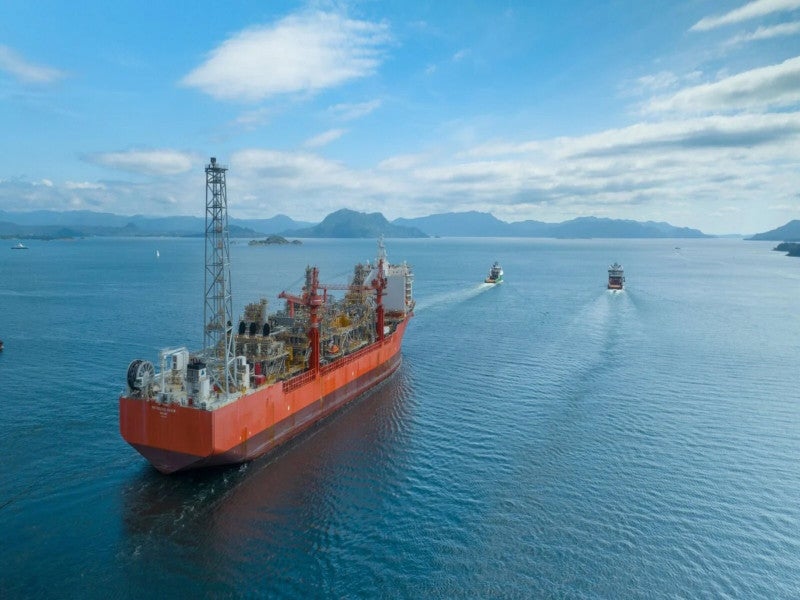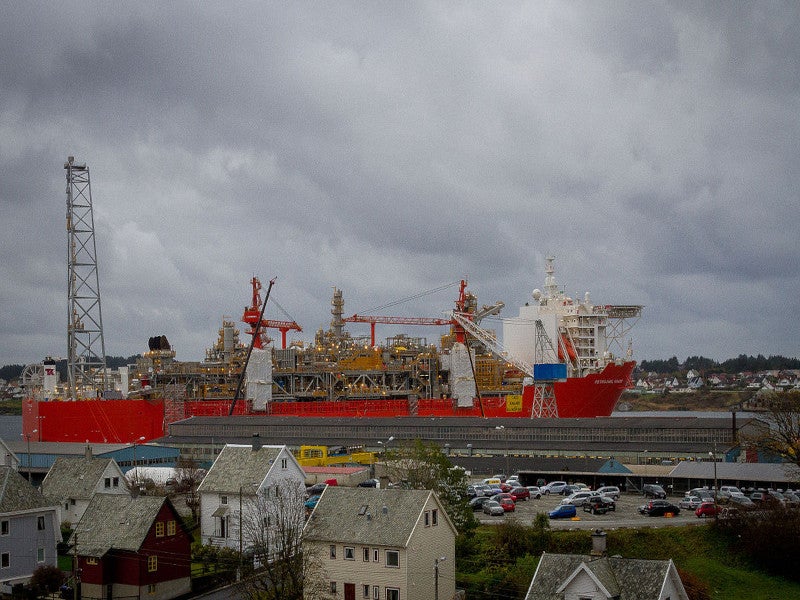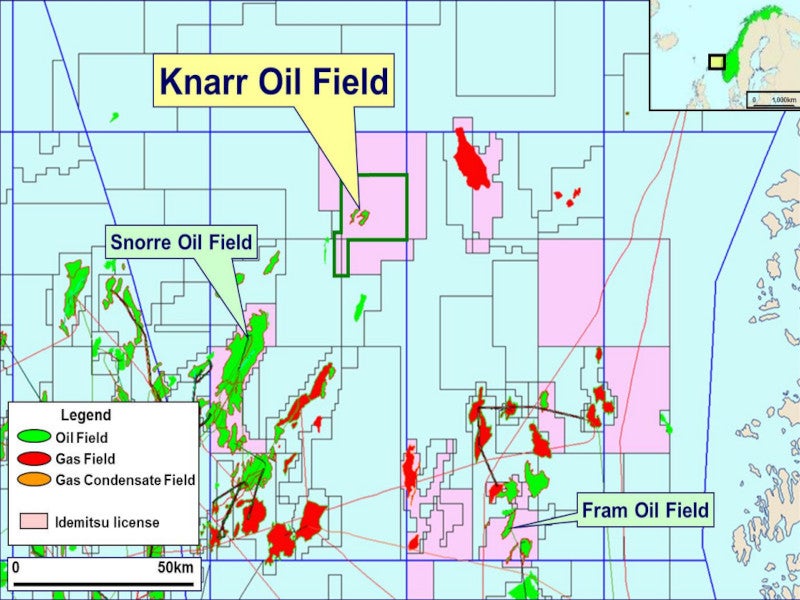The Knarr (formerly Jordbaer) oil and gas field is located in the Norwegian Continental Shelf (NCS) in the northern North Sea.
The partners in the field include operator Norske Shell (45%), Wintershall DEA Norge (30%) and Idemitsu Petroleum Norge (25%).
The project was approved by the Norwegian government in June 2011. The first production was achieved in March 2015.
The Knarr field ceased operations in 2022, and the Knarr floating, production, storage and offloading vessel (FPSO) was also removed from the field.
The Norwegian Ocean Industry Authority (Havtil) granted the consent for decommissioning and removal activities at the Knarr field to Norske Shell in May 2024.
The decommissioning process for the subsea facilities will be completed by 2028.
Location
The Knarr field lies in production licence 373S of block 34/3 within the Tampen area, at a water depth of 1,345ft (410m). It is situated 50km northeast of the Snorre oil and gas field.
Discovery of the Knarr field
The Knarr field was discovered in July 2008 by the 31/3-1S well, drilled by the Bredford Dolphin drilling rig. The well reached a depth of 4,081m and flowed at the rate of 42,789m³/day of gas and 1,239m³/day of oil.
An appraisal well, 34/3-1A, was drilled by the Bredford Dolphin drilling rig in October 2008. A second well, 34/30-1 A, proved the commercial viability of the field.
Geology and reserves
The Knarr field reservoir is located at a depth of 3,800m. Hydrocarbons are found in the lower Jurassic sandstones of the Cook Formation.
The field was estimated to contain 55 million barrels of oil equivalent (Mboe) to 100Mboe. Recoverable reserves were estimated at 7.97 million m³ of oil, 240 million cubic metres of gas, and 0.56 million tonnes of natural gas liquids.
Drilling and exploration of Knarr West prospect
In December 2011, an exploration well, 34/3-3 S, was drilled leading to the discovery of the Knarr West prospect, 4km away from the Knarr field.
A sidetrack, 34/3-3 A, was drilled to delineate the discovery well. It encountered oil in the upper part of the Cook reservoir. The wells were drilled by the West Alpha semisubmersible drilling rig.
The reserves contained in Knarr West were estimated at 1.5 million cubic metres to four million cubic metres of oil equivalent.
Knarr field development
The Knarr field development comprised the Knarr Central and Knarr West structures. The field development plan included six production and injection wells and two subsea templates.
The production wells were drilled from two drill centres located at water depths of 1,345ft. Oil and gas are produced through pressure maintenance by water injection.
The subsea infrastructure was tied back to the Knarr FPSO. The FPSO has a capacity of 63,000 barrels per day (bpd). It requires a maximum power of 32.85MW with topsides weighing 15,000t.
Export via the Far North Liquids and Associated Gas pipeline system
The produced oil is exported from the FPSO through shuttle tankers. Gas is exported through a 110km-long, 12-in diameter pipeline to the St Fergus gas terminal via the Far North Liquids and Associated Gas pipeline system.
Contractors involved
Wood Group Kenny won the contract for carrying out the front-end engineering design for the project. EPC Offshore created the development solution for the field.
SHI-India Engineering Centre carried out the detailed engineering of the topsides of the FPSO.
Teekay was awarded the $1bn engineering, procurement and construction contract for the FPSO. The vessel was built by Samsung Heavy Industries in South Korea.
Samsung Heavy Industries also received a contract worth $836m to fabricate topsides for the processing and riser platforms.
The subsea equipment for the field was supplied by FMC Technologies under a $135m contract. FMC supplied subsea production trees, water injection trees, control modules, wellheads, manifolds and other equipment.
Aptomar received a five-year contract in April 2015 to provide field monitoring services at the Knarr field.
DPS Delta was subcontracted to supply a glycol dehydration and debutaniser package for the Knarr FPSO. Hamworthy supplied its offloading pumps and fire water pump system. Light Structures provided its hull condition monitoring system. INMACO supplied firefighting equipment.
In July 2012, Subsea 7 was awarded a $400m contract for the design and construction of a 4.5 km-long flowline bundle for the project.
Rosenberg WorleyParsons was subcontracted by Subsea 7 to fabricate 12 tie-in spools in April 2013. FES was subcontracted to supply automatic diverless bend stiffener connectors (DBSCs) to NOV/Subsea 7 for the Knarr FPSO.
DOF Subsea was subcontracted for the installation of mooring, tow-out and hook-up work for the Knarr field FPSO.





